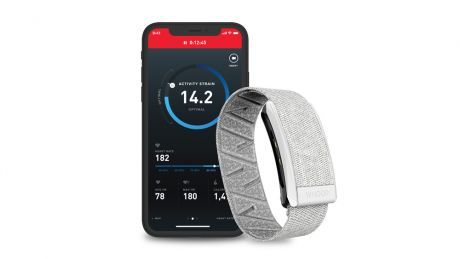You can trust Coach
Life in the Whoop world is a relatively simple affair. It’s not here to track your every step or map every workout you do in precise detail. The Whoop strap splits life in two. You’re either putting your body under strain, or you’re recovering from that strain. Put both together and you can ensure the two states balance each other out.
It’s a premise that’s easy to understand and it’s one I like. Each day your activities increase your strain, and each night your sleep helps you to recover. You get a recovery rating out of 100%, and your daily strain is rated out of 21. Your aim, guided by Whoop, is to keep your numbers roughly in line or, if you’re aiming to improve your fitness, carefully overreach with your strain on days your body is ready for it.
The Whoop is a simple device as well. It’s a heart rate tracker you strap to your wrist, forearm or upper arm. There’s no screen. Everything it tracks is beamed to the app, which calculates your overall load. You can swap the strap on the Whoop, and the fabric used is comfortable to wear 24/7 and dries quickly after a shower.
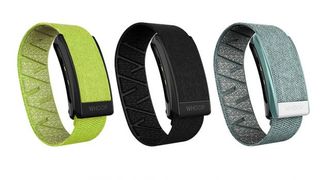
You are meant to wear the Whoop all the time, and when it needs charging (every four to five days in my experience) you attach a small pre-charged power pack that sits on the Whoop itself so you never have to take it off. It’s a really smart and novel idea, though you do have to remember to recharge the power pack itself when you disconnect it from the Whoop. I also had occasional problems with the pack not charging properly so it was dead when I clipped it on.
Your heart rate is key to recording your strain and recovery, and so is your heart rate variability, which many trackers use these days as a general guide to the stress your body is under. Whoop also measures your respiratory rate.
The longer you wear the Whoop strap, the better it knows you and the smarter your feedback gets. You also start to unlock things like the strain coach, which recommends a daily strain target to promote fitness gains, and weekly and monthly assessments that break down your sleep, strain and recovery in a series of graphs and descriptions of how your load increased or decreased.
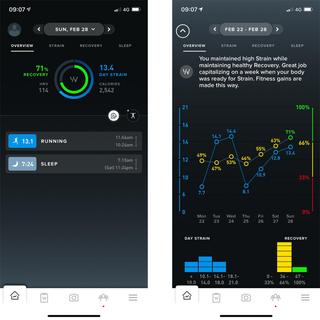
When you undertake an activity like running, cycling or HIIT, the Whoop can automatically detect it and will give you a dedicated strain rating for that activity, along with a graph showing your heart rate throughout. In my tests the Whoop would sometimes miss my activities, and if this happens you can log it manually in the app to get the strain rating – the Whoop is always recording heart rate and logging strain, so it’s just a case of marking out the time you were exercising.
The sleep tracking on the device provides a lot of useful detail without becoming overwhelming, and showing how what has been tracked is relevant. You are given your time in light, REM and deep sleep along with time awake, plus an efficiency rating based on your overall time in bed vs time asleep. You are even given sleep targets based on whether you want to peak, perform or just get by the next day.
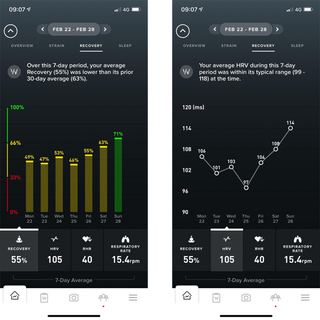
Everything Whoop tracks is rated against its baselines for you. It takes a while to establish these, but that means the device becomes more accurate over time. Eventually it is able to note if your resting heart rate is elevated for a few days or your heart rate variability is lower than usual, both of which can be an indication that your body is under excessive strain or even falling ill.
Your data is engagingly presented in the app, and it’s easy to see key stats like your overall recovery and strain at a glance. There’s also plenty of extra detail on your sleep and general recovery if you do want to spend a bit of time digging into it. You also get weekly and monthly assessments rating your performance in things like strain balance and sleep consistency.
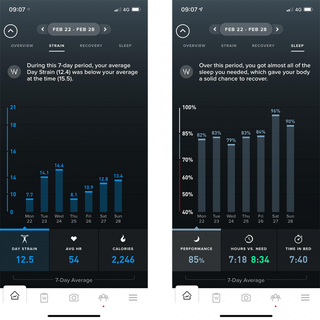
The service Whoop offers is a good one, especially for active people trying to ensure they’re not overdoing it and to line up their harder training sessions on the days when their body is well recovered and primed to handle it.
However, there are flaws. One is that you pay for Whoop with a subscription. A six-month membership is £30 a month (£180). It drops to £24 a month for a year’s commitment (£288), and £18 a month for 18 months (£324). Even though the strap is included, that’s still a hefty ongoing cost.
The bigger problem, however, is that Whoop is dependent on the accuracy of the data collected by the strap, and in my experience this simply isn’t up to scratch.
For starters it’s an optical heart rate monitor, and these are prone to error. I don’t trust even the best optical heart rate monitors to judge my effort during training, based on their performance in comparison with a more accurate chest strap heart rate monitor. The Whoop is far from the best optical heart rate monitor I’ve tried and can’t be connected to an external strap.
When worn on the wrist, it was frequently inaccurate when I was at rest. I compared it with the reading from a chest strap to check, but even by looking at the app and taking my own pulse I could see how far off it was.
Things only got worse during exercise, so I moved the strap to my forearm. Its performance improved, but it was still not close to good enough. I found in this position the Whoop could track my heart rate at rest, but when I was playing with my daughter or doing chores like laundry or gardening it would sometimes log intense activities where my heart rate spiked higher than it would during a hard run, skewing my strain record. This error would happen once or twice a week with the strap on my forearm, and all bets were off when it was on my wrist.
See related
- The Best Heart Rate Monitors For Workouts
- How To Calculate Your Heart Rate Zones And What They Mean
- The Best Fitness Trackers

Keen to see if I could extract good data from the Whoop, I moved it up my arm to my biceps muscle. You can buy a dedicated biceps strap, but luckily my lack of muscle mass meant I could use the normal strap on my upper arm. In this position the strap is less comfortable during the day than when worn on the wrist, but I did finally get data that was accurate enough to give me useful feedback that wasn’t tainted by the phantom intense activities it picked up on my forearm or wrist.
However, even on the biceps the Whoop wasn’t infallible, especially during exercise where it occasionally started a workout with a huge inaccurate spike – once again throwing the strain rating out of whack.
Most fitness trackers and sports watches I test read my heart rate far more accurately on the wrist, and during sports I can pair them to a chest strap to get more accurate data. It’s disappointing that Whoop performs so poorly.
In fact, many sports watches offer a similar service, tracking your recovery and overall body stress levels using heart rate variability. Polar and Garmin’s watches are very good on this front. Polar’s sleep and recovery tracking in particular is close to as good as Whoop’s, while Garmin’s Body Battery rating gives a simple snapshot of your overall energy levels rated out of 100.
These watches offer a lot of other useful features too, mainly sports tracking, and don’t require a paid subscription. The upfront cost can be higher than 18 months of Whoop, but you’d expect a flagship sports watch to last much longer.
While the strain and recovery measurements Whoop offers hold promise, there are better ways to spend your money.
Sign up | £30 a month for a six-month subscription

Nick Harris-Fry is a journalist who has been covering health and fitness since 2015. Nick is an avid runner, covering 70-110km a week, which gives him ample opportunity to test a wide range of running shoes and running gear. He is also the chief tester for fitness trackers and running watches, treadmills and exercise bikes, and workout headphones.
